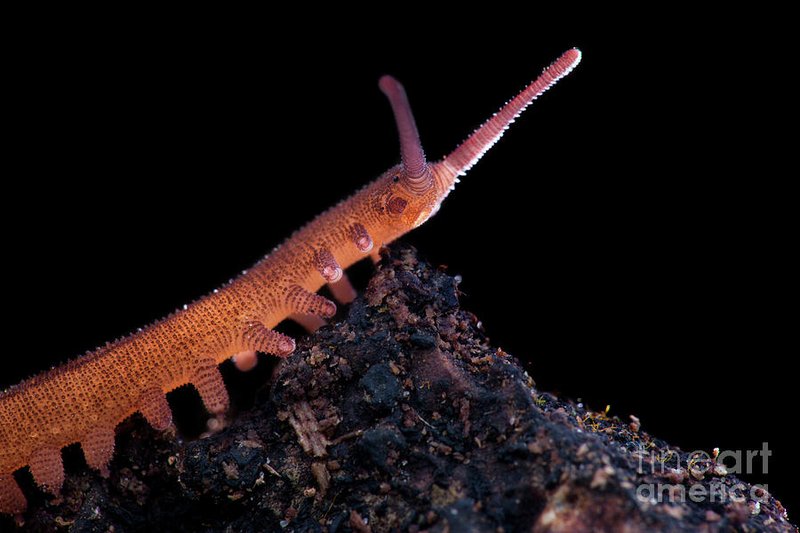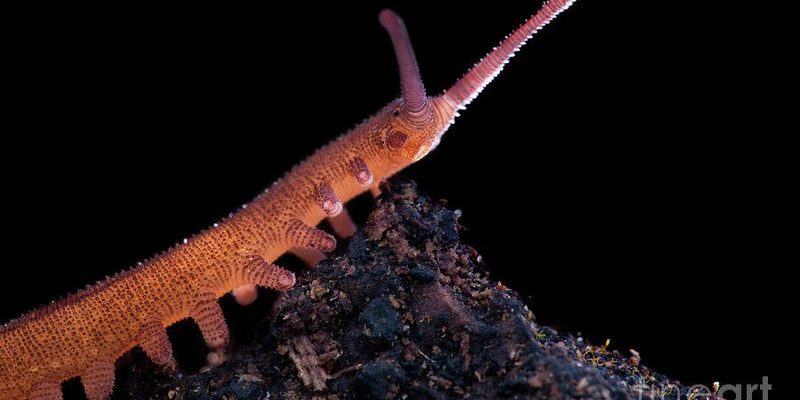
Imagine a vibrant city split into tiny neighborhoods. Each block has its own charm, but without connections, people struggle to interact and thrive. Similarly, when velvet worms find their habitats fragmented, their survival and reproduction come under threat. In this article, let’s dive into the world of velvet worms and explore how they respond to the changes in their environment caused by habitat fragmentation.
What Are Velvet Worms?
Velvet worms, or *Onychophora*, are a fascinating group of invertebrates that bridge the gap between arthropods and annelids. With around 200 species known, these creatures typically inhabit moist, damp environments. You’ll usually find them under logs or leaf litter in tropical and subtropical forests.
These worms have a soft, segmented body covered in a velvety texture, which is where their name comes from. They’re also equipped with a unique defense mechanism: they can secrete sticky slime to trap predators! Imagine being able to shoot glue at your enemies – it’s a pretty handy feature if you’re a small creature.
They’re nocturnal hunters too, preying on insects and other small invertebrates. This means their habitats must be rich in prey. But what happens when those habitats start to shrink?
Understanding Habitat Fragmentation
Habitat fragmentation occurs when large expanses of habitat are broken into smaller, isolated patches. This happens due to activities like deforestation, urban development, and agriculture. Think of it like taking apart a puzzle: once the pieces are scattered, it’s much harder to see the big picture.
For velvet worms, this fragmentation can be a serious issue. When their natural habitats are divided, it can lead to a variety of challenges. The smaller patches may not have enough resources for survival, making it harder for these worms to find food and mates.
As habitats become fragmented, they also become more vulnerable to environmental changes. For example, smaller habitats can be hotter and drier, which isn’t ideal for creatures that thrive in moist environments.
How Velvet Worms Adapt to Fragmented Habitats
So, how do velvet worms adapt when their habitats become fragmented? They have developed several strategies to cope with these changes. Here’s a look at some of their responses:
- Increased Mobility: Velvet worms may increase their movement to find suitable habitats. They can travel between patches in search of moisture and food.
- Altered Behavior: These worms might change their activity patterns, becoming more active at night to avoid daytime heat.
- Reproductive Strategies: In fragmented habitats, they may increase their reproductive rates to ensure that at least some offspring survive.
These adaptations are essential for their survival. However, they can only do so much. If fragmentation continues, even the most adaptable velvet worm may struggle.
The Impact of Climate Change on Velvet Worms
Climate change is the silent partner in the story of habitat fragmentation. As temperatures rise and rainfall patterns shift, velvet worms face even more challenges.
Higher temperatures can dry out their habitats, making them less hospitable. Imagine trying to survive in a sauna without any water! Additionally, climate change can lead to extreme weather events, like heavy rains or droughts, which can directly affect their populations.
Moreover, as their habitats become more isolated, genetic diversity can suffer. This is like having a family tree with only a few branches; the lack of diversity can make species more vulnerable to diseases and environmental changes.
The Role of Conservation Efforts
To help velvet worms and their habitats, conservation efforts are key. Protecting areas where these creatures live can help maintain their populations. This means preserving forests, creating wildlife corridors, and replanting native vegetation.
You might be wondering what a wildlife corridor is. It’s essentially a safe passage that connects fragmented habitats, allowing velvet worms and other wildlife to move between them. Think of it as a highway for creatures, enabling them to find food, mates, and suitable living conditions.
Educating the public about the importance of biodiversity and habitat preservation is also crucial. The more people understand the role velvet worms play in the ecosystem, the more support there will be for conservation initiatives.
Research and Future Directions
Scientists are continually studying how velvet worms respond to habitat fragmentation. This research is essential for understanding their needs and how we can better protect them.
By examining their genetics, behavior, and ecology, researchers can gain insights into how these creatures adapt. This information can then inform conservation strategies, ensuring that we’re doing everything possible to support their survival.
You may come across specific studies focusing on the impact of different degrees of habitat fragmentation. These studies help in understanding threshold levels—basically, how much fragmentation is too much for velvet worms to handle.
In a world where habitat fragmentation is becoming increasingly common, it’s essential to pay attention to creatures like velvet worms. Their sensitivity to environmental changes can serve as an indicator of the health of our ecosystems. By understanding how they cope, we can take meaningful steps towards preserving not just their habitats, but also the rich biodiversity that sustains our planet.
So next time you hear about habitat destruction, remember the velvet worms. They may be small and often overlooked, but their survival story is a powerful reminder of our responsibility to protect the natural world. Together, we can support these unique creatures and ensure they thrive for generations to come.

